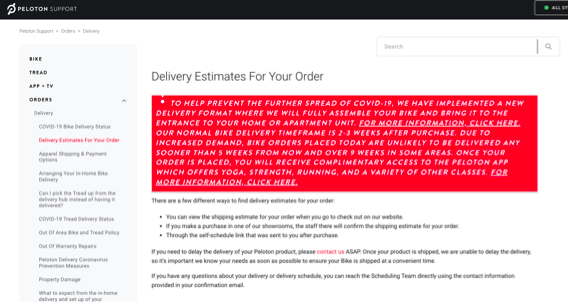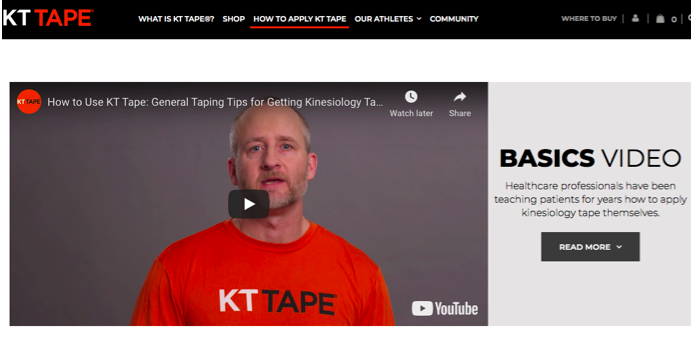There’s a lot of great advice out there regarding how small businesses should approach branding, especially for a wellness brands. But the thing is, one size does not fit all. There’s absolutely no way that what works for one industry fully applies to another.
Yes, some common branding strategies can and will show results. But on the whole, each company needs to take its own course, based on its own in-depth market research.
When it comes to health and wellness, the discrepancies between niches become even more prominent. After all, a professional athlete looking to go into ketosis and someone with an autoimmune disorder are vastly different audiences, and they don’t even react to the same messages.
Because of this, small businesses, who can hardly afford to make mistakes, need to approach branding carefully. Even more so considering that the entire health and wellness industry suffers from severe trust issues. There are news stories that state that multivitamins do nothing but create expensive urine. Moreover, research data shows that about two-thirds of the global population feel disrespected by their primary healthcare physicians. With these factors in mind, it quickly becomes clear why there’s so much suspicion and skepticism.
But the good news is, a smart branding strategy can promote trust and credibility – as long as you have a clear idea of what you need to do.
What Are The Benefits Of Branding For Trust And Credibility?
The three main factors influencing user behavior include:
- brand trust
- brand familiarity
- brand experience
Studies have shown time and again that consumers will naturally gravitate towards brands they already know. ~60% of shoppers will purchase products manufactured by companies already familiar to them. Moreover, customers are willing to pay a higher price for products by a brand they trust. This explains the continuing success of high-end and luxury brands throughout all industries.
But sales and profits aren’t the only benefits of smart branding.
Done right, well-executed branding (where the customer’s expectations are met or exceeded) often results in social proof such as word of mouth marketing, which is effective among a staggering 92% of consumers. If one considers that branding alone can achieve those types of results, it becomes even more clear that investing in image offers more potential returns than any other form of marketing.
So what are the ways for health and wellness businesses to build their brand image that will result in trust and credibility? The following are a few simple strategies with great potential.
Delivery And Consistency In Wellness Brands
First and foremost, businesses that are working on building trust among their users need to consider the messages and values they are going to communicate. Regardless of the delivery method, these values and beliefs need to be consistent throughout everything the business does. Even more importantly, each claim needs to be backed up by the brand’s actions.
For example, you can take a look at how fitness company Peloton is handling possible delivery delays due to the Covid-19 pandemic. Their website clearly displays a notice, stating that delivery for any orders is likely to take between 5 and 9 weeks.

However, a recent twitter interaction between two influencers shows that these expectations are likely to be exceeded. The fact directly influences user experience, thus positively impacting the brand’s trustworthiness. And, the exposure through the influencers’ 2+ million followers is an added bonus.

Social Proof Of Wellness Brands
Another way to boost your brand’s credibility is to employ testimonials on your website. Reviews are great (even negative reviews can be turned into positive branding), but what you should be aiming to get is social proof combined with engagement.
One of the best methods for making social proof part of your branding strategy is to feature user-generated content on your site. A great example of a company doing this well is Future Kind. They have created a collage from customers tagging the company in their Instagram pictures and put it right at the top of their homepage. This gives the brand an instant dose of credibility as it shows real customers very clearly satisfied with the product.

Provide Buyer Protection
Nothing is as convincing as when a company believes in its products. Except for maybe when it’s ready to back up its claims and beliefs.
Offering buyer protection should be standard practice in most industries. In the health and wellness sector, this can sometimes be more difficult to achieve – especially when online shopping is involved.
Nonetheless, a money-back guarantee makes for an excellent strategy for anyone who can implement it. It’s a surefire way to improve customer purchase experience, as well as to get a jump start on retention. A good example of this is demonstrated by Ultimate Meal Plans. They make a point of showcasing their 30-day money-back guarantee within a clear white circle right near the “Sign Up” button. This gives consumers the piece of mind knowing that they can get a full refund if they aren’t happy with the purchase.

Educational Wellness Brand Content
A company blog, social media profile, podcast or YouTube channel are usually thought of as content marketing strategies. They work well for SEO and are mainly considered a means to widen reach.
Nonetheless, there’s an important role content can play in branding, and that’s providing value.
When customers understand that what they’re getting from a brand exceeds the service or product they receive after the initial purchase, they automatically start to consider the brand a trustworthy resource.
As an excellent example of a company that provides educational content to its customers, take KT Tape. Their how-to section includes dozens of instructional videos on how to apply the kinesiology tape. All are sorted into different sections based on body parts. Buyers who get the product can then easily browse these videos, find the ones that apply to their needs, and follow the instructions for a great experience.

Customer Service
Last but not least, don’t forget about the impact of approachability on trust and credibility. A company that is there for its visitors through a 24/7 customer service, social media support group, or website chatbot is ~90% less likely to lose business to a competitor.
So, the final branding strategy to consider if you want to build trust is to improve on the quality of customer service you provide. Simple solutions like offering support on social media channels or investing in personalization can bring in excellent returns.
Make sure that all customer inquiries are handled quickly and efficiently. You’ll see that the satisfaction these actions create is only going to extend into the image you build around your company.
Final Considerations For Wellness Brands
It’s always a good idea to invest in your brand’s image. In an industry such as health and wellness, it’s quite clear that trust is something that requires special attention.
So, to see the best possible results, make sure to stick to the ground rules of being clear and consistent in your messaging, but also to back up all your claims with actions. Do your best to provide an exceptional shopping experience. Engage with your customers, provide helpful content, and don’t be afraid to add a human touch. This way, you’ll be able to nurture the image of a company that values its customers, instead of just seeing them as numbers.
For some more tips on reputation management, check out these other Marketing.com.au articles:
- How to Improve Your Business Reputation
- Budgeting Social Media Marketing and How to Get Your Money’s Worth
- What Is Reputation Management?
- Why The Buck Stops With Customer Reviews
Natasha Lane
Latest posts by Natasha Lane (see all)
- Building Credible Health And Wellness Brands - September 1, 2020
- Budgeting Social Media Marketing and How to Get Your Money’s Worth - October 1, 2019








